Last year we attended a Mennonite auction and picked up a small, hand operated extractor at an extremely good price. The extractor is ancient, built in the days before stainless steel, but a well made device. They operate much like a washing machine – a spinning cage within a drum. The cappings are cut off the comb and the frame is placed in the cage. When the cage is full, the extractor is cranked to spin the cage. Centrifugal force flings the honey from the comb to the inside of the drum, where it flows to the bottom of the drum. A valve at the bottom of the drum, called a honey gate, permits tapping the collected honey.
We picked up a bottling bucket, a 5 gallon bucket with another honey gate at the bottom. A mesh strainer is attached to the top of the bucket and honey from the extractor is collected in the bucket below. This strains out wax particles, bug parts, vegetable matter and any other contaminants that may have gotten into the honey. The bottling bucket may then be moved indoors, where bottling may be performed more conveniently.
Harvesting honey is a sticky, messy business. Cleaning, on the other hand, is a breeze. Bees have a natural instinct to collect nectar and any other potential source for honey. They will even go so far as to rob neighboring hives. Leaving gear outside where the bees can get to it uses this robbing instinct to clean the gear off. The strainer, bottling bucket and extractor were cleaned in this fashion. The bees did an excellent job, leaving behind dry flakes of wax from capping fragments.
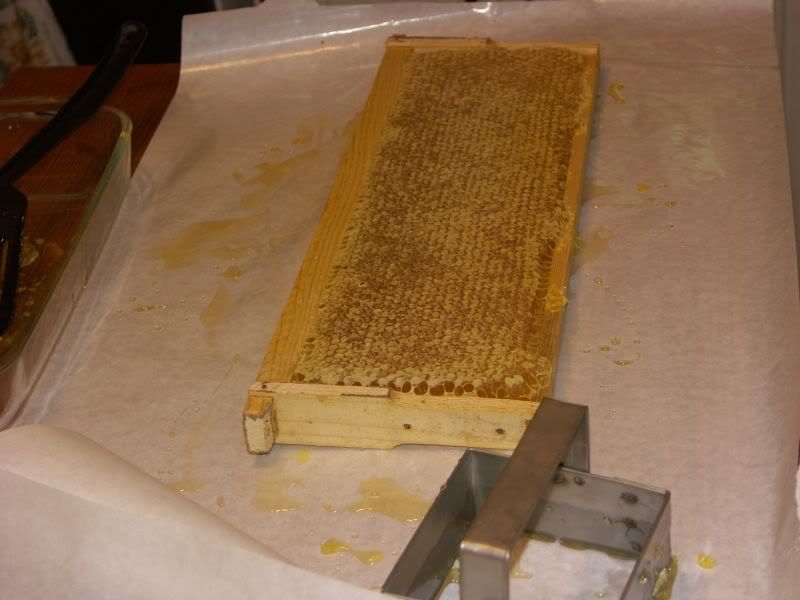
Full frame laid out for comb processing
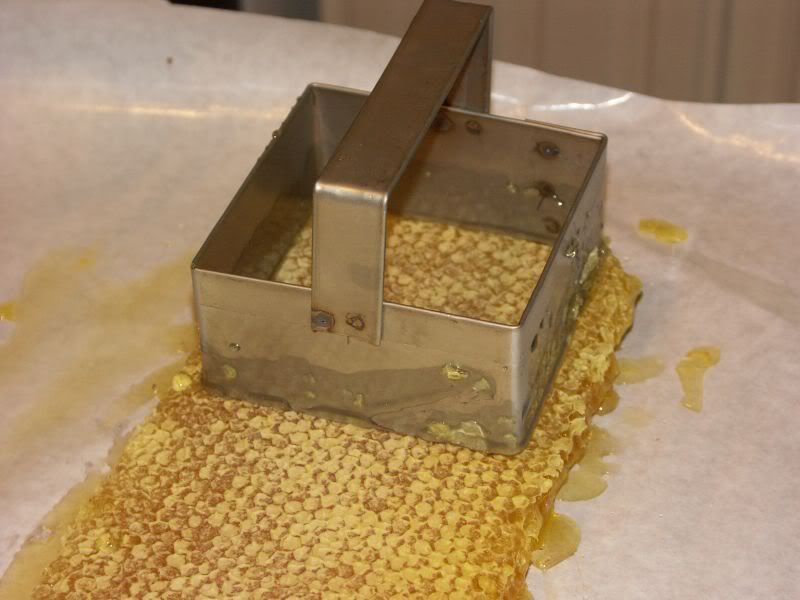
Frame removed, cookie-cutter type tool for producing uniform chunks of comb
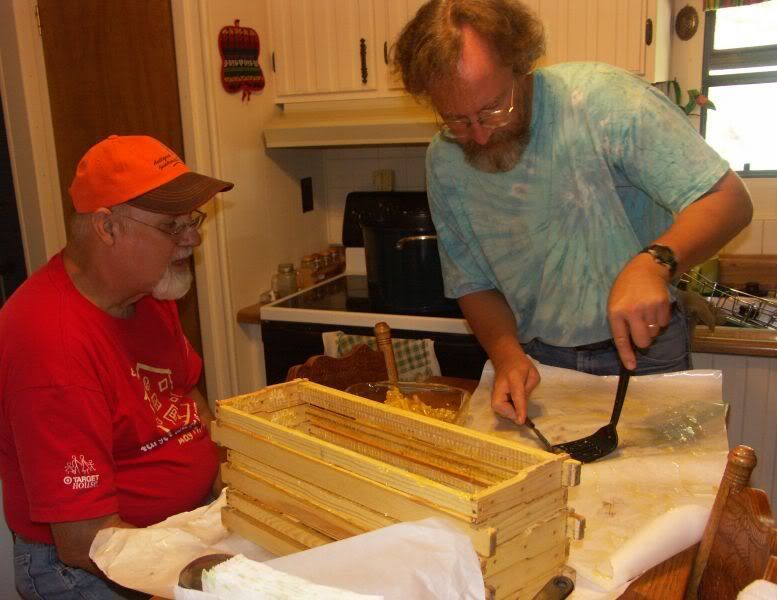
Processing comb in kitchen
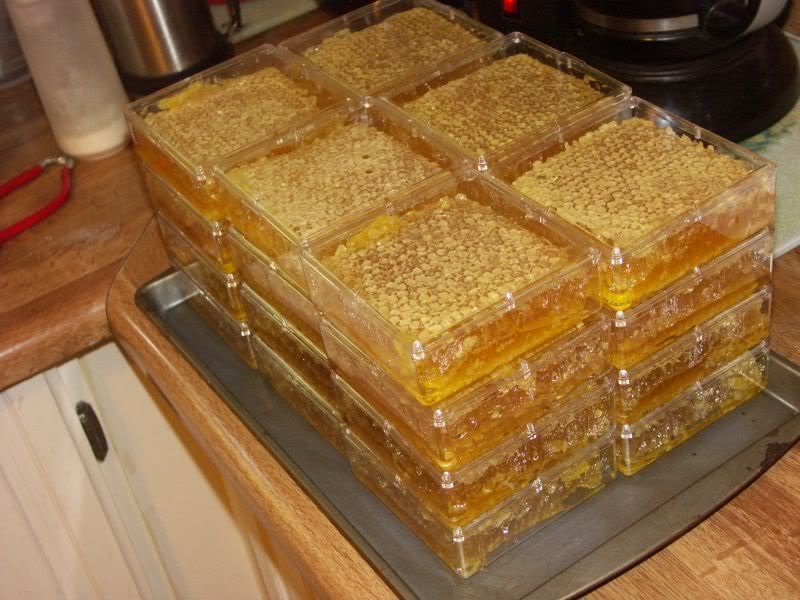
Finished comb packaged and ready to eat.
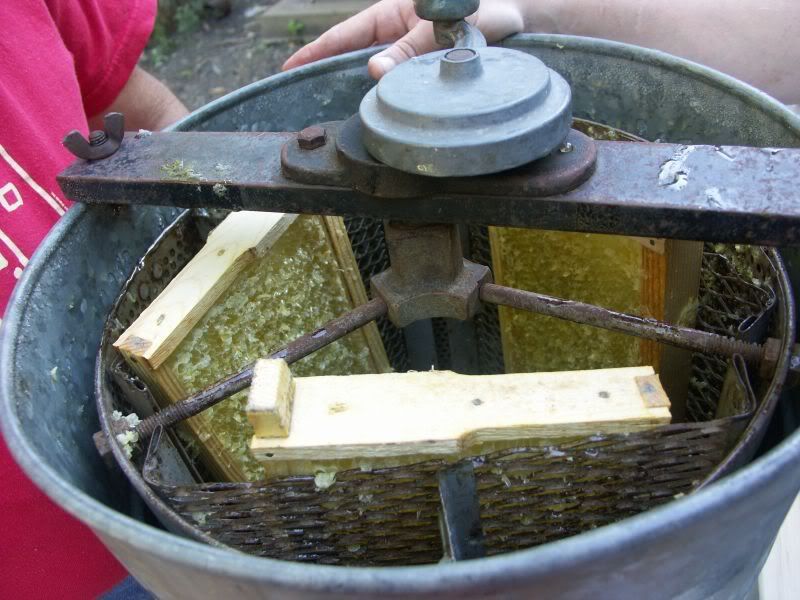
Extractor loaded and ready to go
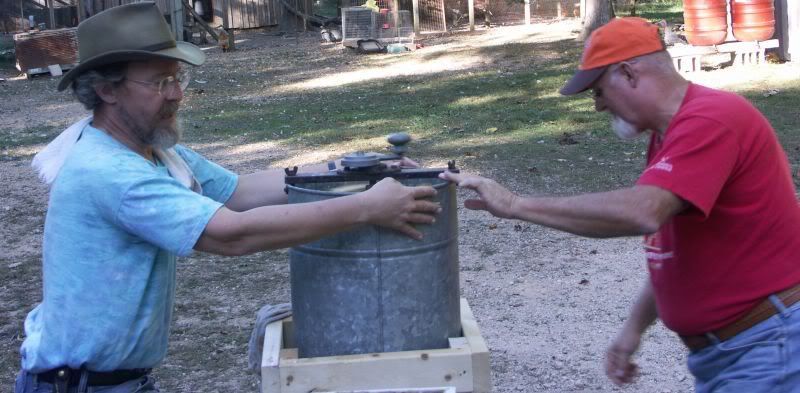
Holding extractor steady while it spins
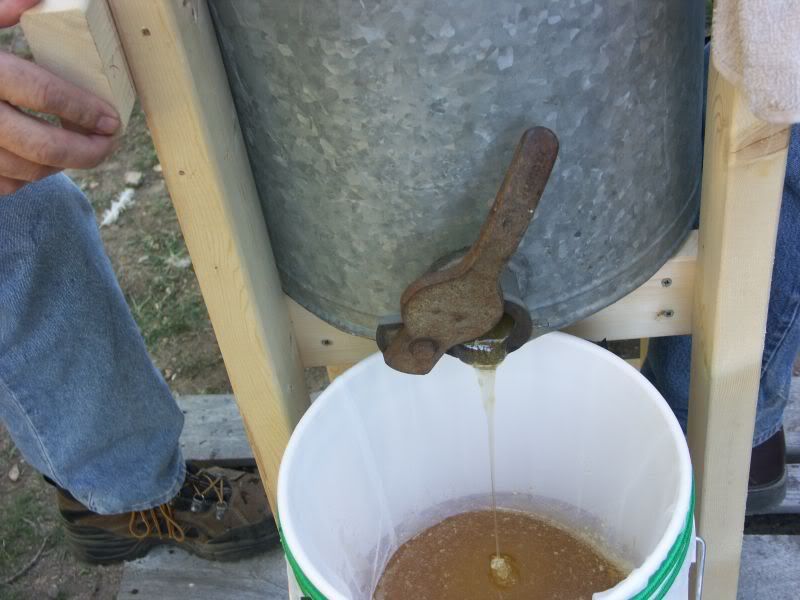
Extractor output to bottling bucket
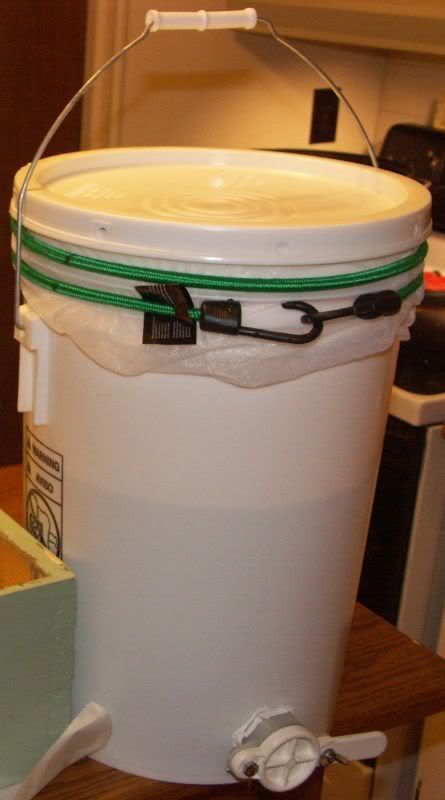
Bottling bucket in kitchen to load jars
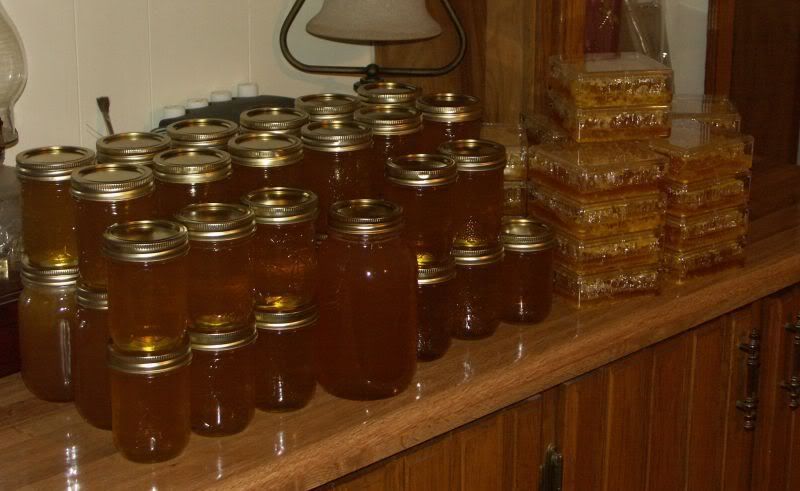
Harvest beginning to build up
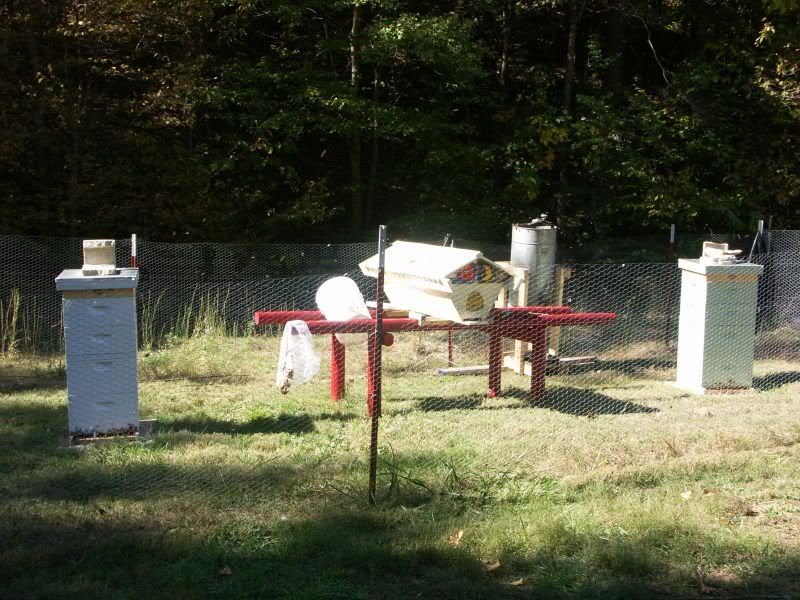
Bees clean processing equipment, leaving behind wax ready for candle making
Regards,
Pat
